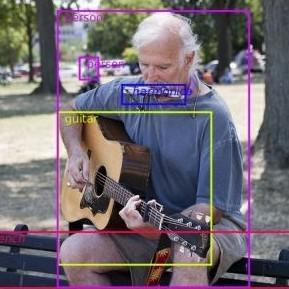Zero-Shot Object Detection: Learning to Simultaneously Recognize and Localize Novel Concepts
Current Zero-Shot Learning (ZSL) approaches are restricted to recognition of a single dominant unseen object category in a test image. We hypothesize that this setting is ill-suited for real-world applications where unseen objects appear only as a part of a complex scene, warranting both the `recognition' and `localization' of an unseen category. To address this limitation, we introduce a new \emph{`Zero-Shot Detection'} (ZSD) problem setting, which aims at simultaneously recognizing and locating object instances belonging to novel categories without any training examples. We also propose a new experimental protocol for ZSD based on the highly challenging ILSVRC dataset, adhering to practical issues, e.g., the rarity of unseen objects. To the best of our knowledge, this is the first end-to-end deep network for ZSD that jointly models the interplay between visual and semantic domain information. To overcome the noise in the automatically derived semantic descriptions, we utilize the concept of meta-classes to design an original loss function that achieves synergy between max-margin class separation and semantic space clustering. Furthermore, we present a baseline approach extended from recognition to detection setting. Our extensive experiments show significant performance boost over the baseline on the imperative yet difficult ZSD problem.
PDF Abstract





 CUB-200-2011
CUB-200-2011